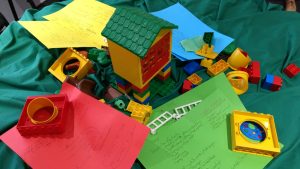
Have you booked for the evening of retreat “Women Empowered: Framing My Future” coming up on Wednesday 21st March 2018 in Warwick, Queensland? It’s going to be an absolute delight to welcome you along! The Women Empowered retreats have been very popular in past years, and to keep up with changing times I’m offering this retreat in the evening instead of during the day. I’m keen to see how that suits everyone and whether this is a format you’d like repeated in future. I’m also keen to tell you a bit more about what to expect when you come along to “Framing My Future”.
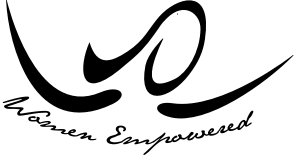
Dream Big!
There’s no shortage of media images these days prompting women to dream and achieve 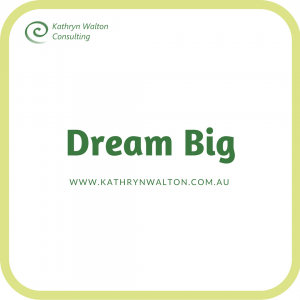 anything they want. It’s a message that’s intended to be encouraging by chipping away at the gender stereotypes our society has constructed over many generations. For so many reasons we know that women can, and do, achieve amazing things in our world. There are many wonderful role models who inspire and propel us towards our own version of success.
anything they want. It’s a message that’s intended to be encouraging by chipping away at the gender stereotypes our society has constructed over many generations. For so many reasons we know that women can, and do, achieve amazing things in our world. There are many wonderful role models who inspire and propel us towards our own version of success.
Obstacles lurking beneath the surface
Yet beneath it all continues to lurk a tangle of obstacles, deeply rooted and barely visible to the eye until we dig down through the layers, bringing them into the light of day. Thus begins the process of empowering women to not only take charge of their dreams, but to have the skills to manage the obstacles along the way.
The voices in our heads
I’m a big fan of dreams (and I do a lot of dreaming!) and I’ve often written and spoken about goal-setting previously. When used appropriately, dreaming and goal-setting is very powerful. It brings us to a position of being future focused. Sure, not everyone is comfortable with this. Human brains are preset to focus on problems (that’s how humans have survived for so long!), and so our angst rises with every thought of following a dream. The barriers, the obstacles, the hurdles, the roadblocks – call them what you will – they generally get in the way preventing us from following through with actions, and even from getting started in the first place. They wield their power not so much through their actual ‘being’, but through the unseen voices in our heads telling us we can’t do it, it won’t work, we’re not good enough, and we’ll fail if we try.
 Sounding familiar? The thing is we often don’t even realise it’s happening, and when we do notice it, we keep it to ourselves because we think we’re the only ones. But have I got news for you! All of us have those critical voices. YES! All of us! They’re the voices of self-doubt, fear, hopelessness and pessimism. They keep us small when we need to be big. And the way to deal with them is to bring them out into the open. Straight away their power begins to diminish.
Sounding familiar? The thing is we often don’t even realise it’s happening, and when we do notice it, we keep it to ourselves because we think we’re the only ones. But have I got news for you! All of us have those critical voices. YES! All of us! They’re the voices of self-doubt, fear, hopelessness and pessimism. They keep us small when we need to be big. And the way to deal with them is to bring them out into the open. Straight away their power begins to diminish.
Read more about the voices in my head here!
Financial confidence is an obstacle
Two of the hidden obstacles that frequently impact women are financial confidence and emotional confidence. These are the key themes at my next retreat “Framing my Future”. We’re going to dig them up and shine a light on them. We’ll bring them to the surface and get to know them a little better. We’ll scratch away and see what they’re made of. And we’ll use them to propel ourselves forwards towards our hopes and dreams for the future instead of allowing them to trip us up and keep us where we are.
Create a powerful mindset for your future!
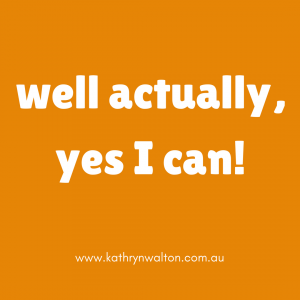 The beauty of the process is that you don’t have to even have any real idea of where you want your future to be heading in order to benefit from this retreat. You’ll leave with the skills to create a powerful mindset to identify, challenge and manage your financial and emotional confidence no matter what path you take.
The beauty of the process is that you don’t have to even have any real idea of where you want your future to be heading in order to benefit from this retreat. You’ll leave with the skills to create a powerful mindset to identify, challenge and manage your financial and emotional confidence no matter what path you take.
Retreat activities
I’m truly excited to be a part of this unique retreat! I believe when women gather together in groups with openness, warm-heartedness and shared intentions, that’s when magic happens! So I hope you’ll join us for this exquisite evening. Donna Neale-Arnold will be my co-facilitator. Donna brings a warm, caring and holistic approach to her financial therapy and homeopathy practices. She has a rich experience having worked in the corporate sector as well as community services and the health sector for many years.
Donna and I will guide you through a series of personal reflections followed by simple yet 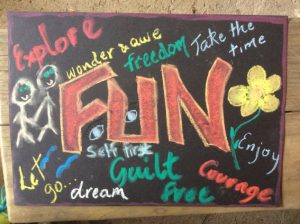 powerful creative activities. The gentle pace will support you to make valuable connections with your own beliefs and actions around financial confidence. You’ll identify the mindset you need to bolster your financial and emotional confidence, and to frame the future you choose. You will be provided with a light meal, delightful company and a gorgeous keepsake to take home with you that will frame your future perfectly.
powerful creative activities. The gentle pace will support you to make valuable connections with your own beliefs and actions around financial confidence. You’ll identify the mindset you need to bolster your financial and emotional confidence, and to frame the future you choose. You will be provided with a light meal, delightful company and a gorgeous keepsake to take home with you that will frame your future perfectly.
Bonuses!
 We will be giving away some special bonuses and door prizes at the retreat including beautiful journals, meditation cushions, carry bags, a Tony O’Connor CD of relaxation music, and more – fabulous gifts to support your self-care and progression!
We will be giving away some special bonuses and door prizes at the retreat including beautiful journals, meditation cushions, carry bags, a Tony O’Connor CD of relaxation music, and more – fabulous gifts to support your self-care and progression!
Bookings are essential
Bookings are essential and limited spaces are available. It’s more fun with a friend or two (or more) so we are offering discounts when you book multiple tickets at the same time.
Here’s the deal: 3 hours of guided reflective retreat with two experienced facilitators, a light meal, all materials, a take home keepsake, a nurturing atmosphere to support your financial and emotional confidence, and opportunities to leave with a special bonus door prize.
Your investment:
- Single ticket: $55
- Double ticket: $100
- Triple ticket: $140
For more information view the Facebook Event here
If you have questions, email Kathryn here
Discovering mountain biking as life’s ultimate parallel universe in her middle age,  Kathryn Walton shares information and reflections in Daisy Spoke that connect, inspire and self-empower women to make healthy choices for themselves. She integrates her love of physical exercise, family, nature, gardening and creative arts with her professional background in mental health social work to facilitate change with individuals, groups and communities of women who are committed to living life to the full.
Kathryn Walton shares information and reflections in Daisy Spoke that connect, inspire and self-empower women to make healthy choices for themselves. She integrates her love of physical exercise, family, nature, gardening and creative arts with her professional background in mental health social work to facilitate change with individuals, groups and communities of women who are committed to living life to the full.

 Kathryn Walton shares information and reflections in Daisy Spoke that connect, inspire and self-empower women to make healthy choices for themselves.
Kathryn Walton shares information and reflections in Daisy Spoke that connect, inspire and self-empower women to make healthy choices for themselves.
 So, what are these foundation stones of wellness? There are four main foundation stones that I work on with my clients as well as in my own personal life. Each of the stones support each other – they are interlinked – and they are a fabulous place to start building or renovating wellness at any time! The foundations are based on solid evidence that is routinely used in the mental health sector.
So, what are these foundation stones of wellness? There are four main foundation stones that I work on with my clients as well as in my own personal life. Each of the stones support each other – they are interlinked – and they are a fabulous place to start building or renovating wellness at any time! The foundations are based on solid evidence that is routinely used in the mental health sector. Basically, people are designed to move … a lot. When we don’t move enough, we are at greater risk of switching into a depressed or anxious state. It’s simple biology. Get moving, get active, get off the sofa, and move as much as you can and often as you can. For most of us it’s recommended to aim for about an hour of moderate intensity exercise or activity each day, and limit our screen time to 2 hours per day. The combined mental and physical health benefits of exercise / activity cannot be replaced by any medication. If you are in pain, or have limited movement, injuries, or chronic disease, the best idea is to do what you can. Remember always check with your doctor or health professional if you have any concerns about your health, exercise, and resting needs.
Basically, people are designed to move … a lot. When we don’t move enough, we are at greater risk of switching into a depressed or anxious state. It’s simple biology. Get moving, get active, get off the sofa, and move as much as you can and often as you can. For most of us it’s recommended to aim for about an hour of moderate intensity exercise or activity each day, and limit our screen time to 2 hours per day. The combined mental and physical health benefits of exercise / activity cannot be replaced by any medication. If you are in pain, or have limited movement, injuries, or chronic disease, the best idea is to do what you can. Remember always check with your doctor or health professional if you have any concerns about your health, exercise, and resting needs. 2. Sleep
2. Sleep 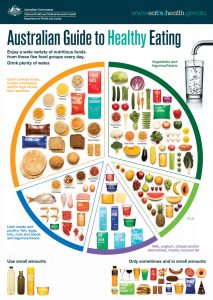 3. Nutrition
3. Nutrition  4. Mind
4. Mind